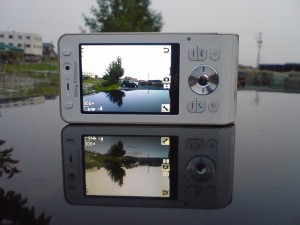[Or: Getting your learners started with learning on the go]
Look up a definition of mobile learning, and one of the most common phrases that turns up is ‘on the move’, or ‘learning on the go’. Although mobile learning can be integrated strategically in the classroom (see this earlier post for more ), the easiest way to start using mobile learning with learners may be not use it in the classroom.
Sound like a cop out? It´s not. It’s just a low-risk approach to getting you and your learners into the idea of mobile learning. You get them to do the work outside the classroom – on the move. Simple. Here are five steps to follow:
Step 1
Find out what mobile, handheld devices your learners have. You could take the opportunity to teach them some computer-related vocab too (here’s an image of devices you could use). What do they use these devices for in their personal lives? How often? What about language learning – do they use their devices for this in any way? How?
Step 2
In groups of two or three, learners brainstorm how they could use these devices to support and develop their foreign language study when they are on the move. Some learners may already use their mobile devices for this. Get a list of options on the board or onto a PowerPoint slide. Here are some suggestions:
- Language learning apps and games (see some specific apps and some more)
- Dictionaries and thesauri – monolingual and bilingual
- Book and magazines in English (e.g. on an e-reader or smartphone)
- Audio and video podcasts (e.g. from the BCC, or CNN. Other ESL podcasts here)
- Get information/reviews about specific locations they visit via geotagging (e.g. with the free app Rummble)
- Translate signs, ads, menus etc to and from English or their native language when in a foreign country (e.g. with apps like Pic Translator)
Step 3
In pairs, learners discuss one or two mobile options they would like to try out, depending on the handheld devices they have, outside the classroom. They also discuss when and where they might do this learning, and for how long (e.g. commuting to work by metro; in the evenings after dinner on the sofa; waiting for the bus etc.) Point out that just 5 or 10 minutes each time is fine, and they should decide on only one (or max two) options. Tell them to try out their chosen option at least once before the next class if they would like to – make it clear that this is an optional experimental activity!
Step 4
In the next class, or about a week later, get learners to report back on what they did to the group. What did they find useful? What was not so useful/helpful? Is this ‘on the move’, informal learning for them – or not? It´s important to explore learners´ perceptions of the activity, and to debrief. Ask those who would like to, to try another of the mobile options explored in Step 3, before the next class. In a subsequent class, get them to report back again, this time more briefly. Carry on this cycle of experimentation of trial and reporting back, for a period of time (e.g. bi-weekly over a month or two).
Step 5
After encouraging learners to experiment for a period of time, draw some conclusions about mobile ‘on the move’ learning with the group, led by those who have taken part in the optional (bi-)weekly activities. Some learners may then continue to work out of class with some of the mobile resources they have found. Some may have been infected by the enthusiasm of others, and now be tempted to try out apps. Some may not. Some may never have got involved in the first place. This all fine and good – at the end of the day, you are simply giving your learners options and tools. Whether they like these tools or find them useful is up to them. But you’ve helped make them aware of what is out there.
Some extra reading
- Educause’s ‘7 Things you should know about mobile apps for learning’
- David Read has a recent blogpost about what his students use mobile devices for in their independent language learning
- Another great post from David about getting students to create their own personalised word lists with apps
- Top 50 iPhone apps for educators
If you get your students to try out apps with some on the move learning, let us know about how it goes in the comments section below!
Related posts:
- mLearning #1: The big picture
- mLearning #2: The issues
- mLearning #3: The apps
- mLearning #4: On the move
- mLearning #5: A case study
- mLearning #6: Six key mLearning resources
- mLearning #7: mLearning & social networks
- mLearning #8: Five Top Tweets (on mLearning)
- mLearning #9: A Dummies Guide to QR codes
- mLearning #10: Yes we scan (more on QR codes)
Nicky Hockly
The Consultants-E
May 2010


Great post Nicky. I think the idea of starting out with some optional activities for them to do is a good way to test the water with the students. I’m sure teachers will find students are hungry for this and will respond well. It might also be useful to set up some kind of channel where they/the teacher can share their experiences, add new apps/ways to use their phones. After your recommendation, I’ve found http://www.edmodo.com a very quick and easy way for us to communicate and share links/files/suggestions etc.
Thanks for your comment, David. I like this idea of adding an extra channel for feedback and adding new ideas for use of apps etc. Nice!
Nicky